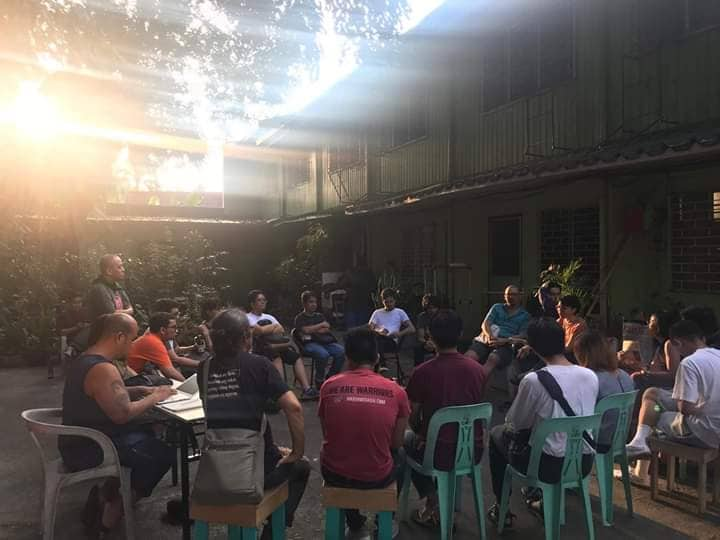That violence is normal and impunity inevitable, the very things we fought against during the first People Power uprising, are the same things this regime wants to make acceptable through Misyon, Bato, Children, and Mindanao so it could justify the Drug War and the Martial Law.
By ROMA ESTRADA
Bulatlat.com
How does a despot keep the loyalty of the military? Keep their pockets full. How does he test the waters for nationwide militarization? Put at least 1/3 of the country under it. How does he cleanse their atrocities to regain public trust? Create a cultural arm for massive propaganda.
Yes, the despot is Rodrigo Duterte.
His cultural arm consists of many personalities. At the forefront we find social media influencers like Mocha Uson. But since penetrating consciousness requires more than fabricating information comes the necessity of art. We find certain filmmakers.
What can be called as military apologist films such as Cesar Soriano’s Ang Misyon (2018), Adolf Alix Jr.’s Bato (2019), Maricel Cariaga’s Children of the River (2019) and Brillante Mendoza’s Mindanao (2019) have led the Concerned Artists of the Philippines (CAP) and Ibong Adorno to examine how films are being used for state propaganda in the first Cinema Kritika, a focus group discussion, held last January 18.
Film as myth-making, press release
Bagging Best Picture arguably places Mendoza’s Mindanao (2019) in a comfortable spot in film history. Given MMFF’s reputation, it wouldn’t be difficult for any film guising as cultural to assert relevance. Rius Valle of Save Our Schools Network argued how winning such an award becomes an insult to many Lumad students who currently stay under the care of different institutions for having lost their schools due to intense militarization. Shutting down schools as part of counter-insurgency measures is an outright cultural attack, said Valle.
An internationally acclaimed filmmaker who also directed two of Duterte’s SONAs, Mendoza has perfected the art of trickery through moving pictures: a 90’s drama princess, an ailing child, and a supposedly heroic soldier for a family–what else could win Filipino heartstrings? To top it all, a Mindanaoan epic retold so it could portray state forces as heroes. Such move reminds us of the Marcoses who also used cultural stories in painting a good picture of themselves. Remember that iconic Malakas ang Maganda artwork?
This regime’s investment on film through its cultural arm can be traced back to its offensive efforts in 2018 to red-tag progressive films such as JL Burgos’ Portraits of A Mosquito Press (2015), Arbi Barbarona’s Tu Pug Imatuy (2017), and Kip Oebanda’s Liway (2018). These films, having successfully shown what men with unsupervised power that is the military do to unarmed communities, probably gave them an idea of the potency of films to influence viewers’ consciousness.
That violence is normal and impunity inevitable, the very things we fought against during the first People Power uprising, are the same things this regime wants to make acceptable through Misyon, Bato, Children, and Mindanao so it could justify the Drug War and the Martial Law. Ironically, both of these are attacks against its own people, the Filipinos, instead of foreign entities like China for claiming false ownership of the West Philippine Sea. Hence the need to reclaim their empty relevance, Antares Bartolome of Concerned Artists of the Philippines (CAP) quipped. Moreover, while said films also try so hard to justify its counter-insurgency measures, they fail to present let alone identify the roots of armed conflict.
Vulnerabilities
A book can be closed, music can be turned off, a painting ignored. In cinema, one pays to enter a dark space and submits herself to look at the screen for the entire run of moving pictures–an artistic helplessness, in a way, a depiction of passive reception of whatever is shown on the screen, in a way, a disjunct of the comfortable space of the viewer from what most of the time are uncomfortable spaces of the viewed.
This arguably laid-back act of viewing a film possibly makes unequipped viewers to easily accept its direct or indirect statement without adequate thought or to simply reduce narratives of socio-political conflicts only as something to be “watched’ instead of transformed.
A participant pointed out how, for example, the choice for Robin Padilla to play Bato Dela Rosa and Judy Santos to play Saima the loving wife and mother in Mindanao appears tactical as these two actors are known to have long won viewers’ loyalty for supposedly representing the aspirations of common people.
It’s our shift to the anti-hero trope, said Ramzzi Fariñas of Time of the Assasins Literary Guild. Films have taught us to root not anymore for the two-dimensional protagonists but to complicated heroes who have conflict with traditional values. Our sympathy for Machiavellian strongmen like Thanos and Heneral Luna developed which might have contributed to the 16M Landslide win of Rodrigo Duterte.
Considerations and proactive actions for/by artists
“Ang manlilikha ay may tapang at talino pero may kabuhayan din,” said Yason Banal of UP Film Institute. While, like everyone else’s, the artists’ need for livelihood is acknowledged, it is still an imperative to ask themselves who benefits most from the projects they are working on, to acknowledge the urgency of taking sides especially amidst turbulent times like today, to protect one’s practice from the dangers of opportunism, Lisa Ito of CAP emphasized.
Of course, taking the just side should reflect on the praxis of the filmmakers as filmmaking is as about its making as the film itself. Actors like Seguerra and Roco recently spoke about the dismal working conditions in showbiz during the hearing in Congress in light of Eddie Garcia’s death.
Because of the misleading tendency of so-called “Indie Films” nowadays, Kyle Atienza of Far Eastern University offered to share Elvin Valerio’s proposed post-colonial characteristics of Filipino independent films: that it must be free from commercial imperatives, that it must possess emancipatory ideology, and that it must be an instrument of decolonization. It can be inferred that by naming his film so, Mendoza has colonized Mindanao through making his film seem like the representation of its entire socio-cultural and socio-political climate.
The mentioned characteristics above shall be the foundations of the envisioned Alternative Cinema or Anti-Imperialist Cinema. This is suggested to consist, for example, of documented footages of state attacks, red-baiting incidents, and the like which, although being practiced by small media outlets like Altermidya, Film Weekly, Kilab Multimedia and Breakaway Media are yet to be seen by the majority of the populace.
Kadamay’s Cine Maralita, a film fest exposing the plight of the urban poor, was noted for a good example of initiating such movement in the film scene. More film fests like this are eyed for future productions.
Meanwhile, it is always high-time for counter-consciousness. Strengthen people’s critical thinking through discussions and novel educational materials. No amount of entertainment and aesthetics can militarize the mind.
The post Film and fascism: Notes on the first Cinema Kritika appeared first on Bulatlat.




